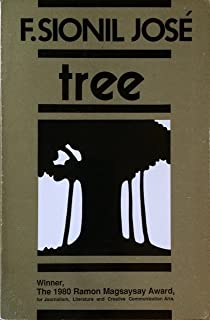Having just re-read Ngugi’s A Grain Of Wheat, I decided to visit Frankie Sionil José’s novel Tree. Ngugi described a struggle for freedom that succeeded. The perspective he chose was that of poor people caught up in events. Francisco Sionil José, on the other hand, describes the aftermath of a national struggle that failed, and from the point of view of the middle classes who may even have benefited from the USA’s initially opportunist snatch of victory from the nationalists.
In the Philippines, the struggle was against Spain, and it was won. But then Spain collapsed and the USA intervened and a new war had to be won. From the point of view of Filipinos, perhaps it was lost. Four hundred years in a convent followed by fifty in Hollywood is how Filipinos often sum up their history.
In its own way, Francisco Sionil José attempts a description of that history via his sequence of Rosales novels.
Tree covers the period from the 1930s to the 1950s, and follows the growth of its main character from a child to a freshman medical student. It describes the Philippines from Commonwealth to independence. Crucially, when the latter arrives, it is hardly celebrated. The social order has long since been cemented and our family in Rosales are on the landowners’ side. Independence brings the Huk rebellion and a dangerous challenge to their status.
Tree is a novel that is not strong on plot. It is almost possible to read its chapters as a series of short stories, portraits of the people and events that filled its narrator’s life. In concept, the Rosales novels have something – only something, I stress! – in common with Anthony Powell’s Dance To The Music Of Time. They bear witness, but only rarely interpret.
In the centre of Rosales, a small town in Pangasinan, north of Manila, is a large, old and rambling balete tree. It seems to be indestructible. Even when an American soldier with an excavator runs into it, the tree survives. The excavator is ruined – the hardware, not the person – and hangs around until locals cut it up for scrap. Now there’s a comment on the USA’s legacy in the Philippines.
Spain’s colonial legacy survives in the form of vocabulary, names of dishes and of people.
What’s in a name? The answer is a culture – a landowner versus a peasant, a Catholic versus an Aglipayan, not to mention a new-fangled follower of Iglesia Ni Kristo. Tree, essentially, is an impressionistic picture of a small society. There are hints at conflict, suggestions of the unrealised, usually centred on lack of rights to land, to produce, to opportunity. In microcosm, Tree suggests what the Philippines might have been, but never achieved. Crucially, had it done so, its main character would probably never have the chance of entering medical school.
It is also important to note that beneath the balete tree nothing grows. Now most tropical earth stays blank when it is denied light. In Tree, F. Sionil José uses this image to suggest that, left to its own device, maybe the Philippines might have prospered – but then maybe not. After all, the tree was indigenous.
Tree is a novel replete with cultural experience mixed with personal reference. Its lack of linear plot has to be accepted and not criticised. It’s just not that kind of book. And, as with most things Filipino, there’s much more going on under the surface, despite the fact that under the tree there’s nothing but bare earth.
View this book on amazon
Tree

many thanks
ReplyDelete